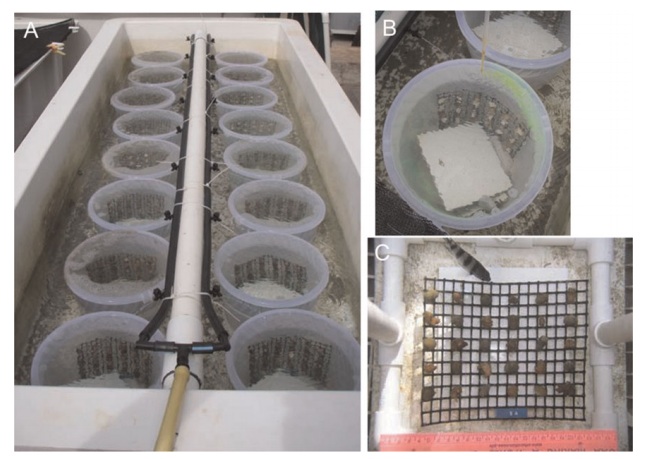A recent scientific paper on coral farming was published by Zac Forsman and many colleagues on the effects of light, flow, and artificial foods on the growth of corals. The goal of the coral farming study was to see if light, water motion, and food could be tuned differently for three Hawaiian stony corals used for this experiment: Montipora capitata, Pocillopora damicornis, and Porites compressa.
The results of the coral farming research were quite interesting, and very noteworthy for the average sps hobbyist. While you should read the entire nine-page paper yourself, the parts that interested me was the effect of flow on light stress, and which foods showed increased growth in the farmed corals.

In regards to light and flow, it became apparent that some corals adapt very well to intense light with low flow, while others did not. While the study pointed out that increased flow reduced photo-inhibition for this Montipora species, it is certainly plausible to be the case for other corals like Acropora species as well.
“Porites compressa grew best in high-light, low-flow conditions, while M. capitata did the worst under these same conditions….Increased flow at high light levels reduced the effects of bleaching for M. capitata, which has been seen in previous studies on photo-inhibition (Finelli et al., 2005; Nakamura et al., 2005). This reduction could be due to a variety of factors such as decreased irradiance from increased surface turbulence, an increased rate of gas exchange, or a slight decrease in temperature.”
The most interesting development came with coral feeding. “This study demonstrated that some commercially available artificial coral foods can have a large positive effect on the growth of some species of scleractinian corals. According to the growth data (by weight and displacement), Roti-Feast, Reef Chili and Reef-Roids increased the average growth rates of the M. capitata and P. damicornis fragments (Figure 4). Although being one of the more expensive and natural products, the tanks fed with the Oyster Eggs did not differ significantly from the control tank. Unfortunately, they didn’t see the same benefits with MicroVert, MarineSnow Plankton Diet, Phytoplan, and Salifert Coral Food on these three species.
“At the manufacturers’ recommended dose we saw no effect of these foods on coral growth above the negative control (filtered seawater). It is important to note that this experiment took place in an open system, with coarsely filtered seawater, and these results may differ in a closed system.”
 It is worth noting that we are talking about three distinct species of coral here. The success or failures of any coral food cannot be surmised by the growth results of such a limited set of corals. We have to consider that that food preferance and polyp size will differ among sps, softies, and LPS of course. As the authors stated eloquently,
It is worth noting that we are talking about three distinct species of coral here. The success or failures of any coral food cannot be surmised by the growth results of such a limited set of corals. We have to consider that that food preferance and polyp size will differ among sps, softies, and LPS of course. As the authors stated eloquently,
“Strong species-specific effects imply that corals are adapted to specialize on a particular niche in a highly heterogeneous environment. Further studies are needed to explain the mechanisms behind these differences (such as polyp and particle size, tentacle and or nematocysts size and arrangement, or zooxanthellae type and density).”
Nevertheless, the important thing to take away from such a study is that coral farming can definitely tailor food, flow, and light specific to coral species to optimize growth rates. Considering the mass popularity of Acropora species, we would love to see this test repeated on several different species of Acros.
Reference: Forsman et. al. 2012. Coral Farming: Effects of Light, Flow and Artificial Food. Journal of the Marine Biological Association of the United Kingdom.





